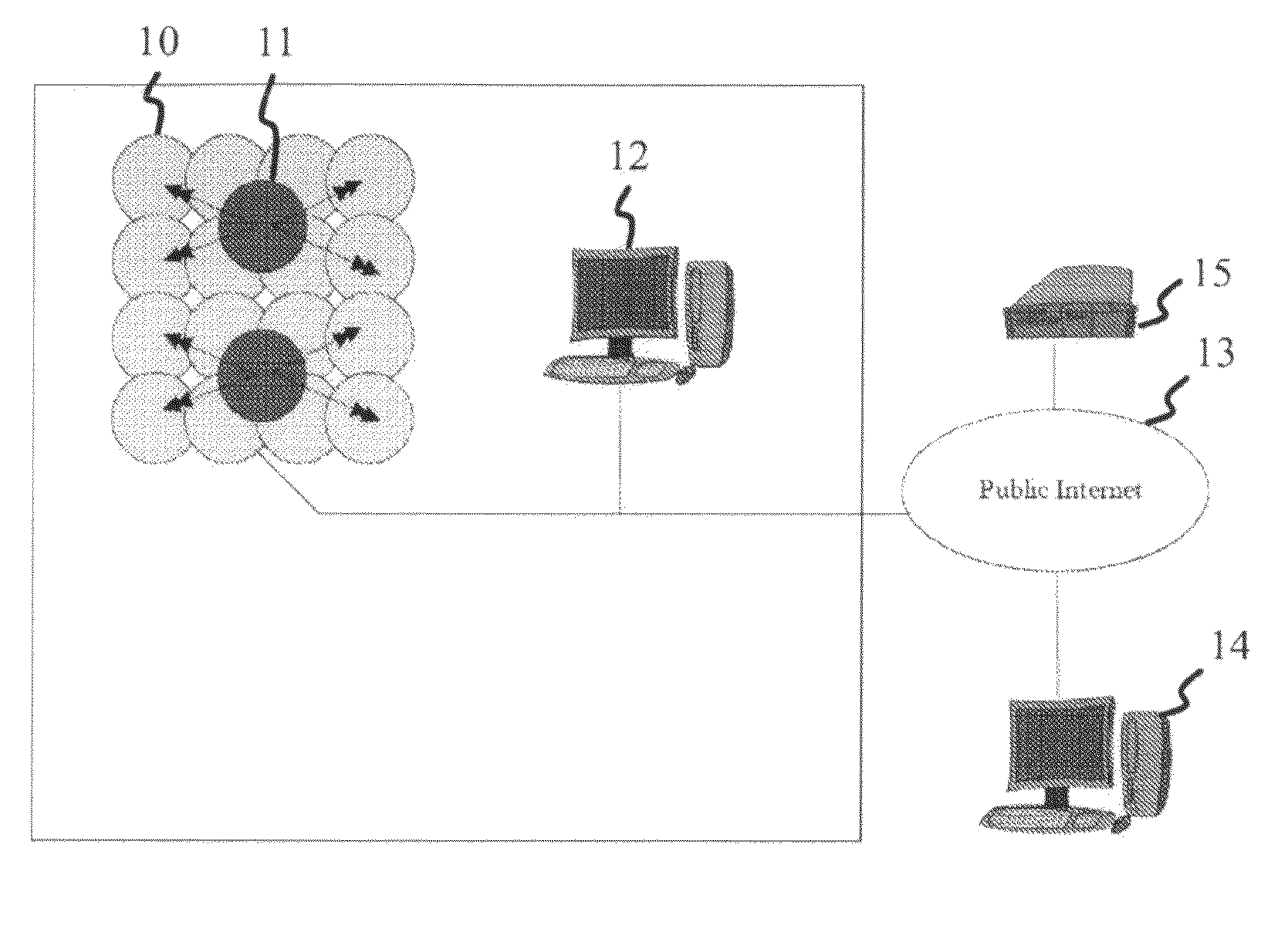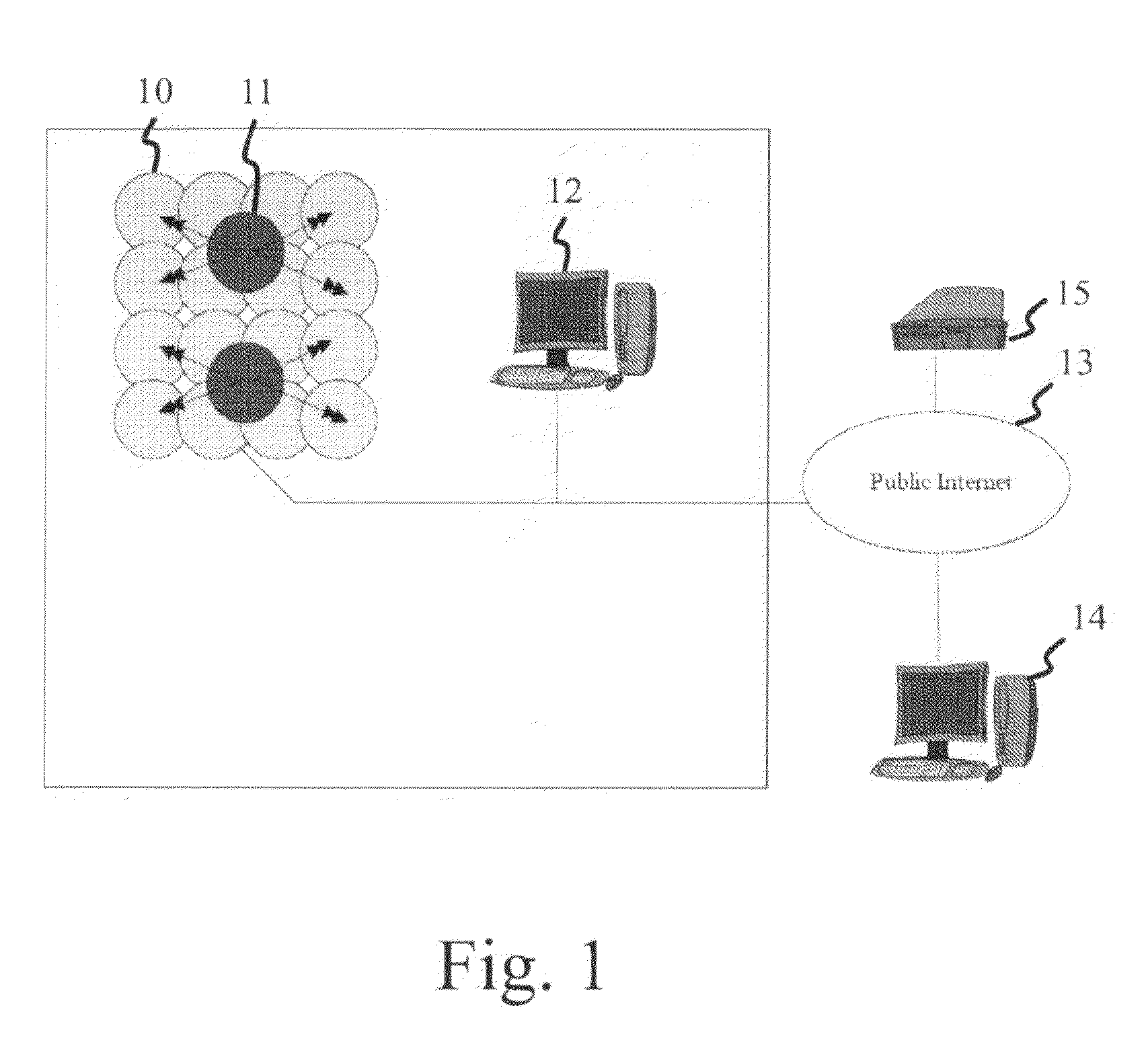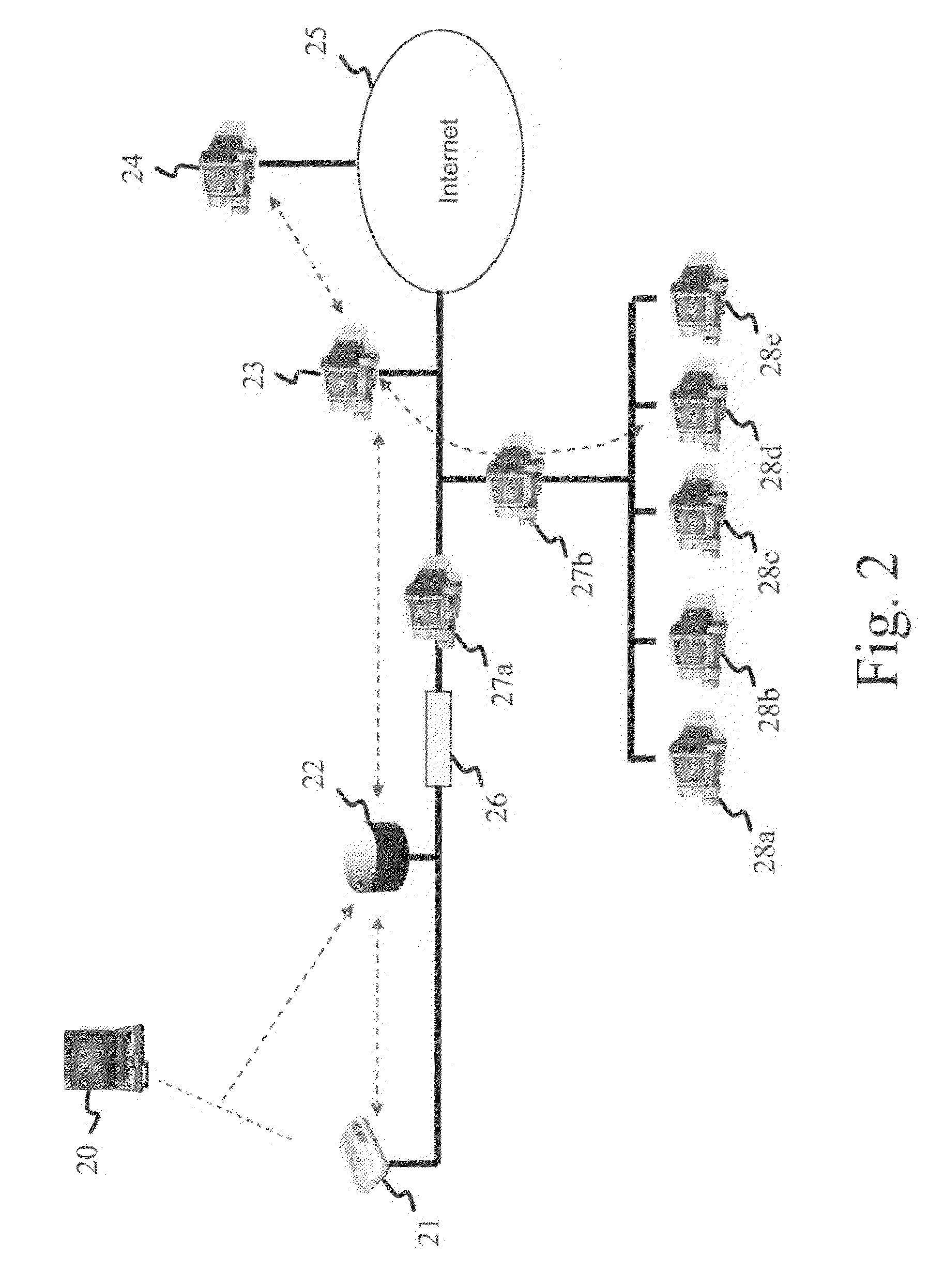End-to-end service quality monitoring method and system in a radio network
a radio network and end-to-end service quality technology, applied in the field of continuous monitoring and quality parameter measurement in wireless broadband networks, can solve the problems of affecting the end user experience, wireless network equipment and user equipment may be incompatible, and certain models or versions of wireless network equipment and users can be affected, so as to prevent data security threats, and ensure service availability.
- Summary
- Abstract
- Description
- Claims
- Application Information
AI Technical Summary
Benefits of technology
Problems solved by technology
Method used
Image
Examples
Embodiment Construction
[0057]Reference will now be made in detail to the embodiments of the present invention, examples of which are illustrated in the accompanying drawings.
[0058]The present invention presents a method and system for performing network performance monitoring in mobile communication networks achieving service quality data, for instance. The method can be implemented in several kinds of networks, such as for example in WLAN and WiMAX networks (networks supporting the IEEE 802.16 standard). Also Flash-OFDM technology and VoIP over WiFi technology are useful applications for the present invention. Nonetheless, use of the presented method is not restricted to these embodiments.
[0059]FIG. 1 discloses an example of the system used in the present invention. The illustration shows the main components of the apparatus. Each sphere 10 includes a WiFi (WLAN) access point with the region covered by each of them. In this example, there are two monitoring stations 11 placed in the area. The arrows orig...
PUM
 Login to View More
Login to View More Abstract
Description
Claims
Application Information
 Login to View More
Login to View More - R&D
- Intellectual Property
- Life Sciences
- Materials
- Tech Scout
- Unparalleled Data Quality
- Higher Quality Content
- 60% Fewer Hallucinations
Browse by: Latest US Patents, China's latest patents, Technical Efficacy Thesaurus, Application Domain, Technology Topic, Popular Technical Reports.
© 2025 PatSnap. All rights reserved.Legal|Privacy policy|Modern Slavery Act Transparency Statement|Sitemap|About US| Contact US: help@patsnap.com



